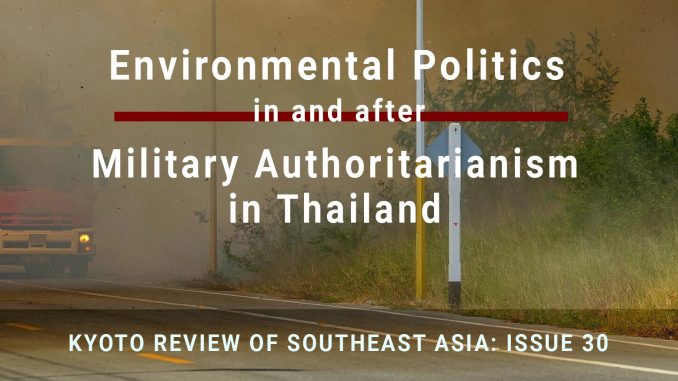
This special collection for the Kyoto Review of Southeast Asia explores the ongoing legacies of environmental politics in, and perhaps after, military rule in Thailand. The five scholars in the collection explore various directions Thailand’s environmental policy and politics have taken under the Thai military. Their work shows how ecological change in Thailand is shaped by struggles between democratic conflict, authoritarian impunity, capitalist extraction, and, more recently, advancing climate change.
Each article approaches these themes in different ways at different scales; none of the points towards easy answers. Instead, the scholars in this collection probe a wide-ranging set of problems ranging from histories of water policy in the Northeast to eco-authoritarianism and green gentrification in Bangkok to the historical disjunctures within the environmental movement to the absence of environmentalism from the contemporary democratic student mobilizations to the shape and assumptions of Thai climate change policy. Despite these differences in content, each author raises critical questions about the relationship between democratic politics, environmental exploitation, and Thai politics more generally.
At the time of writing (November 2020), Thailand finds itself within a renewed cycle of student-led democratic protests. After nearly 5 years of direct military rule and one of crypto-military rule, the country’s young people began taking to the streets in late 2019 to express their dissatisfaction with Prayuth Chan-ocha’s government. As the protests have progressed, the protestors demands have become more refined and more bold, calling for Prayuth’s resignation, constitutional reform, and the reform of the monarchy. Like democratic mobilizations that preceded them, the students have generated connections between calls for a more democratic politics and a broad range of future-oriented visions of social and political progress in Thailand, raising important new questions around constitutional reform, the monarchy, and LGBTQ+ rights. 1
Yet, as Jakkrit Sangkhamanee’s contribution to this collection describes, with a few exceptions, environmental issues have been missing from the diverse and inclusive protests. As he tells us, the absence of the environment is all the more notable given the important role environmental movements played in the story of Thailand’s other political transitions, especially the shift towards democracy at the beginning of the 1990s. 2 As Jakkrit (and others) have argued, those environmental movements were important contributors to the country’s democratization, engaging in grassroots organizing that spread democratic aspiration among previously excluded groups and playing a significant role in the production of both law and civil society at the end of the 20th century.
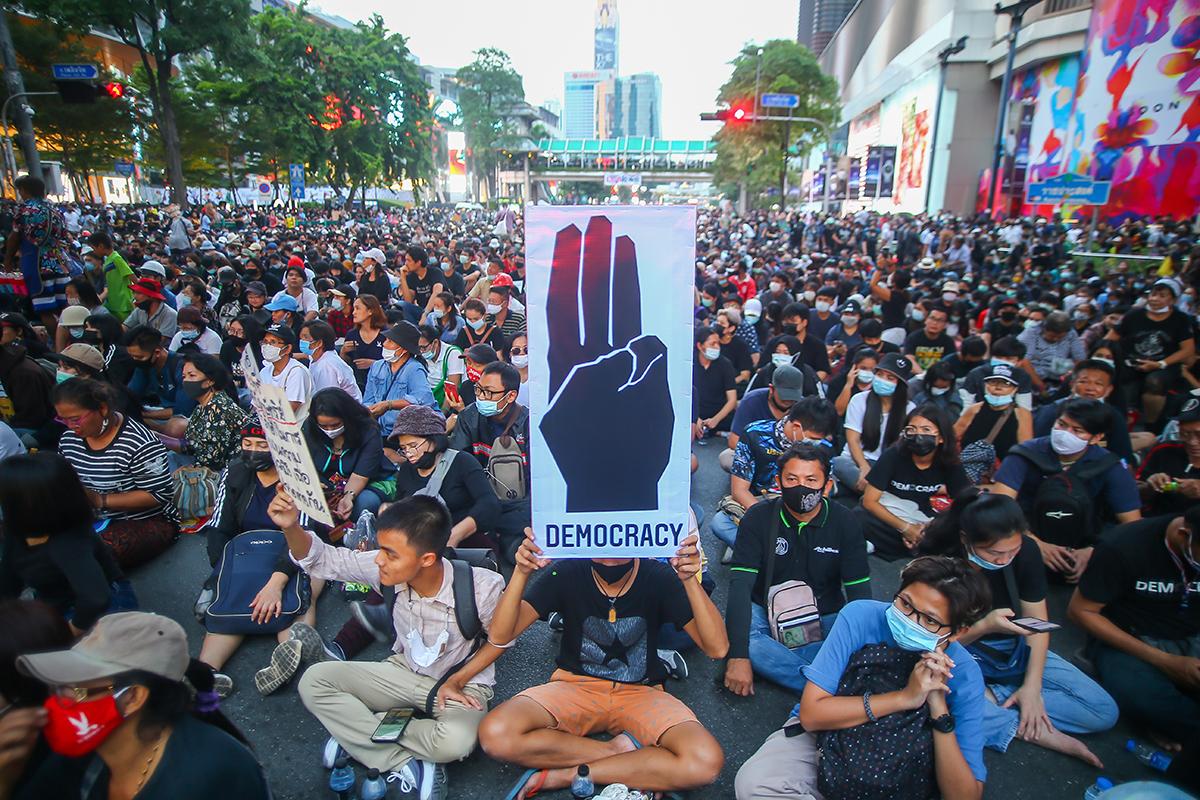
Nearly thirty years on, Thai politics remain caught in a cycle of coups and protests and Thai environments continue to be scenes of extraction, exploitation, and dispossession. Like protests in the 70s, the 90s, and the 2000s, these current democratic mobilizations find themselves struggling against entrenched legacies of oligarchical inequality and military impunity. Unlike those movements, these protestors have gone further, demanding the reform of the monarchy. Jakkrit’s article suggests that despite the relative absence of environmentalists from the protests, the issues protestors are raising have critical implications for the future of environmental justice in Thailand.
Bencharat Sae Chua’s piece extends these insights, describing the effects of Prayuth’s junta (both its post-coup incarnation as the National Council of Peace and Order and the “elected” version as the Phalang Pracharat Party) on the environmental movement. As she narrates, the 2014 coup radically constrained possibilities for environmental justice. Under the military, environmental groups, especially those organized around critical issues of environmental harm and dispossession, have had an increasingly difficult time finding support for their causes. As Bencharat emphasizes, the dangers posed to environmental activists under the military were real. At the same time, environmentalists have often narrowed their own claims rejecting broad political claims in favor of pressing forward locally situated struggles. Moreover, environmental movements have increasingly tried to distance themselves from politics altogether.
Bencharat argues that the effect of the depoliticization of the environment has meant that the same activists involved in the spread of democracy on the ground have, paradoxically, supported military coups nationally. This not only created new rifts in environmental coalitions, but also disaggregated democratic struggle from environmental protection. This split has had important implications for understanding the foreshortened political legacies of environmentalisms across the country and for making sense of the constraints facing activists who wish to make connections between national politics and local struggles.
Boonlert Visetpricha’s piece shows us precisely why the relationship between environmentalism and authoritarianism matters so much. In tracing out the dual history of flood mitigation, canal “restoration,” and eviction in Thai cities, Boonlert demonstrates how, under Prayuth, military authoritarianism has transformed into “eco-authoritarianism.” Boonlert describes how, in the wake of the coup, the Thai military carried out undemocratic evictions in the name of environmental restoration along many of Bangkok’s canals. His analysis shows that what environmentalism is at any one moment depends upon the political context in which it occurs, noting that under democratic regimes, flood mitigation took different forms, with different effects on the poor.
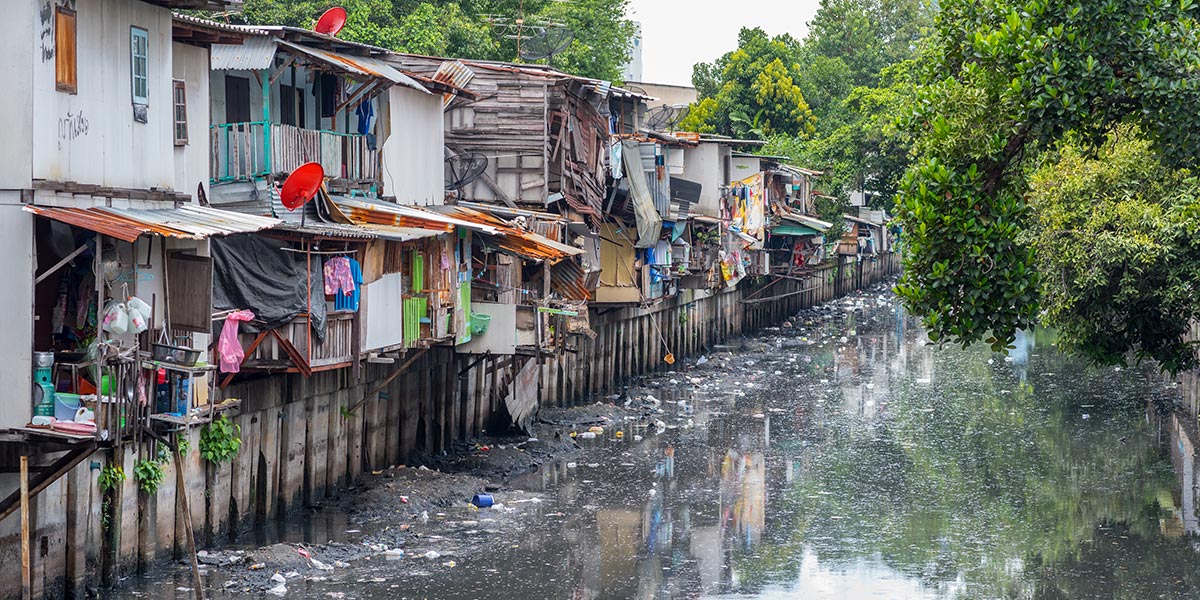
Under Prayuth’s regime, eco-authoritarianism has been aided by what he calls “green gentrification,” which blends environmental concern with capitalist led urban growth. This has resulted in the demolition of poor communities built along waterways in the name of environmental concern. His contribution effectively demonstrates how Thai politics shapes the content of environmental policy, while also showing how environmental harm is unevenly distributed, disproportionately effecting the poor under such conditions. Read in light of dim predictions for Bangkok in a post-climate change future, Boonlert’s argument is a call towards merging environmental justice movements with pro-poor struggles. It also reveals how the current protests may be essential to anticipating the uneven effects of climate change.
Kanokwan Manorom’s critical analysis of the history of water policy in Isan reveals similar uneven effects across a longer historical view. She argues that the Thai state’s developmentalist perceptions of Isan’s people (poor and backwards) are closely tied to the Thai state’s reading of the region’s geography (arid and infertile). These perceptions served as key justifications for a history of infrastructural interventions in the region to reduce poverty and intercede in Isan’s dissident politics. In Isan, water policy effectively linked infrastructure projects with national security. Kanokwan emphasizes that these policies resulted in khon Isan bearing the burden of degraded environments, natural resource depletion, dispossession, and land-loss in the name of national progress.
At the same time, Kanokwan highlights how water policy has been a historical flashpoint for political organizing in the region, noting that many Isan people became politicized through struggles over damming and water distribution. Here, she emphasizes that such contestations reveal how environmental movements shape political sentiments and vice versa. Kanokwan points out that nascent convergences between environmental and political movements in Isan might suggest grounds for important future political movements that link democratic aspiration and environmental protection. In light of the country’s current mobilizations, such convergences offer yet another beacon of possibility on the horizon.
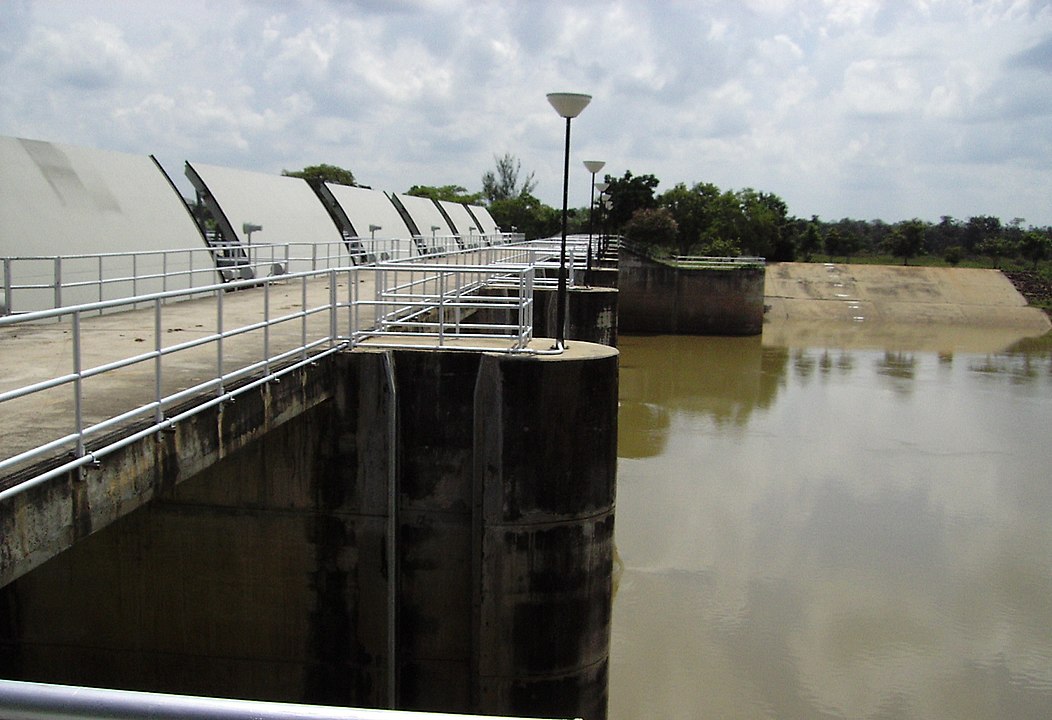
These questions are more urgent now than ever. Chaya Vaddhanaphuti’s essay examining the epistemological foundations of Thailand’s Climate Change Master Plan explores how the document’s technocratic imagination of climate obscures the cultural and political complexities of the effects of the country’s changing environments. Through both a careful reading of the plan and ethnographic attention to climate workshops, Chaya shows us how the plan’s implicit assumptions about what climate is, ignores a range of possible ways of knowing and acting on climate knowledge. As his argument reveals, climate knowledge is not independent of the political landscape within which it is produced, but rather constitutive of such a landscape.
Recent dire forecasts place Thailand and the Chao Phraya delta in the center of some of the most extreme impacts of climate change. Yet, the 2011 floods and the cycles of drought that have followed reveal that the impacts of climate change are neither straightforward nor independent of the country’s politics or its embedded economic structures. Instead, they are bound together in an incredibly complex knot that, as Chaya’s contribution points out, cannot easily be disentangled with mere technocratic managerialism.
Thailand’s current moment of democratic protest, then, presents us with a chance to reconsider the fate of environmental politics under the military and, perhaps, after. Since the dawn of Thailand’s environmental movements in the crucible of the early 1970s, the question of environmental exploitation has been closely related to democratization, endemic forms of power and impunity, and military rule. These longstanding questions are now paired with a new imperative surrounding the implications of global climate change and its local manifestations. Thailand now sits on a knife edge between military authoritarianism and a return democracy. Among the very many things at stake, these articles remind us that environment remains a critical concern.
Eli Elinoff
Guest Editor: Kyoto Review of Southeast Asia, Issue 30, March 2021
Senior Lecturer, Cultural Anthropology, School of Social and Cultural Studies, Victoria University of Wellington
Banner: Ban Chang, Rayong, Thailand, December 2019. A red fire truck attends a wildfire. Image: Pramoonm / Shutterstock.com
Main Articles:

Wither the Environment? The Recent Student-led Protests and (absent) Environmental Politics in Thailand
Ada Apa dengan Isu Lingkungan? Protes Mahasiswa Terkini dan (Absennya) Politik Lingkungan di Thailand
สิ่งแวดล้อมเหี่ยวเฉา? การประท้วงล่าสุดที่มีนักศึกษาเป็นแกนนำกับการเมืองด้านสิ่งแวดล้อม (ที่ขาดหายไป) ในประเทศไทย
環境に未来はない?タイにおける最近の学生主導デモと環境政策(の不在)
Làm khô héo môi trường? Các cuộc biểu tình sinh viên gần đây và Chính trị môi trường (vắng mặt) ở Thái Lan
Lantahin ang Kapaligiran? Ang mga Protestang Pinamunuan ng mga Estudyante Kamakailan at (Nawawalang) Politikang Pangkapaligiran sa Thailand
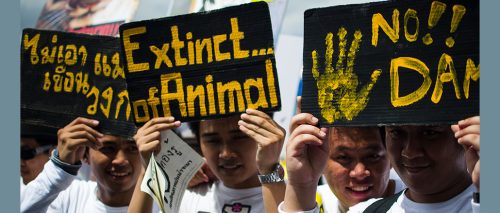
Environmental Movements and the Politics of Morality: Revisiting Environmental Movements under and, Perhaps, After the Thai Military Government
Gerakan Lingkungan dan Politik Moralitas: Meninjau Kembali Gerakan Lingkungan di Bawah dan, Barangkali, Setelah Junta Militer Thailand
ขบวนการสิ่งแวดล้อมกับการเมืองเชิงศีลธรรม: วิพากษ์และทบทวนขบวนการสิ่งแวดล้อมภายใต้และ (อาจจะ) ภายหลังรัฐบาลทหารไทย
環境運動と道徳政策 ——タイ軍事政権下(後?)の環境運動を振り返る
Các phong trào môi trường và chính trị đạo đức: Xem xét lại các phong trào môi trường dưới thời và, có lẽ, sau chính quyền quân sự Thái Lan
Ang mga Kilusang Pangkapaligiran at ang Politika ng Moralidad: Muling pagbisita sa mga kilusang pangkapaligiran sa ilalim at, pagkatapos ng gobyernong militar na Thai
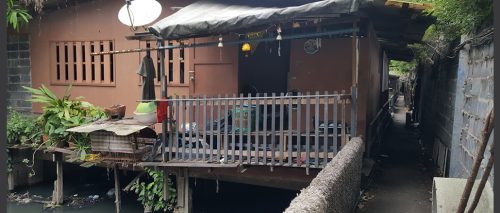
Environmental Gentrification and Eco-authoritarianism: Restoring Canals under the Military-led Government in Thailand
Gentrifikasi Lingkungan dan Eko-otoritarianisme: Memugar Kanal di bawah Junta Militer di Thailand
環境のジェントリフィケーションと環境独裁主義 ——軍部主導政府下のタイにおける運河の改修
Quá trình chỉnh trang đô thị về Môi trường và Chủ nghĩa độc tài sinh thái: Sự khôi phục kênh đào của Chính phủ quân đội Thái Lan
Muling Pagbuhay sa mga Kanal sa ilalim ng Gobyernong Pinamumunuan ng Militar sa Thailand
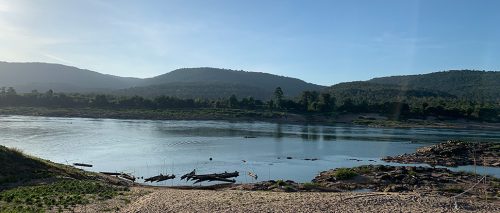
Irrigating Isan: Northeastern Identities and the Politics of Water
Irigasi di Isan: Identitas Timur Laut dan Politik Air
ชลประทานอีสาน: อัตลักษณ์ภาคตะวันออกเฉียงเหนือกับการเมืองเรื่องของน้ำ
イサーンにおける灌漑——東北部のアイデンティティと水政策
Thủy lợi ở Isan: Bản sắc và Chính trị về Nước vùng Đông Bắc
Pagpapatubig sa Isan: Mga Hilagang-Silangang Identidad at ang Politika ng Tubig

Climate Change in Thailand: On Politics of Knowledge and Governance
Perubahan iklim di Thailand: Perihal Politik Pengetahuan dan Pemerintahan
การเปลี่ยนแปลงสภาพภูมิอากาศในประเทศไทย: ว่าด้วยการเมืองของความรู้และระบบการจัดการ
タイにおける気候変動——知識の政策と支配への影響
Biến đổi khí hậu ở Thái Lan: về chính trị tri thức và cai trị
Pagbabago ng Klima sa Thailand: hinggil sa politika ng kaalaman at pamamahala
Notes:
- Read in light of the fact that LGBTQ+ leaders have been at the very forefront of this movement, Pinkaew Luangaramsri’s (2016) outstanding analysis of gender in the Thai environmental might offer important insights into why old environmentalisms don’t fit so well in this new movement and some promising pathways towards reformulating environmental politics on different footings. See: Luangaramsri, P. (2016). “Thailand: whither gender in the environmental movement?” In: Routledge Handbook of the Environment in Southeast Asia (Hirsch, P., ed.) London: Routledge, 470-482. ↩
- For further reading on these questions see, Hirsch, P. and L. Lohmannn. 1989. “Contemporary Politics of Environment in Thailand.” Asian Survey. 294): 439-451; Forsyth, T. 2007. “Are Environmental Movements Socially Exclusive? An historical study from Thailand. World Development. 35(12): 2110-2130; Luangaramsri, P. (2016). “Thailand: whither gender in the environmental movement?” In: Routledge Handbook of the Environment in Southeast Asia (Hirsch, P., ed.) London: Routledge, 470-482; Elinoff, E. and V. Lamb. 2019. “Environmental Politics in Thailand: Pasts, Presents, and Futures.” In Routledge Handbook of Contemporary Thailand (P. Chachavalpongpun, ed). London: Routledge, 379-393. Forsyth, T. 2019. “Beyond Narratives: Civic epistemologies and the coproduction of environmental knowledge and popular environmentalism in Thailand. Annals of the American Association of Geographers. 109(2): 593-612. ↩
